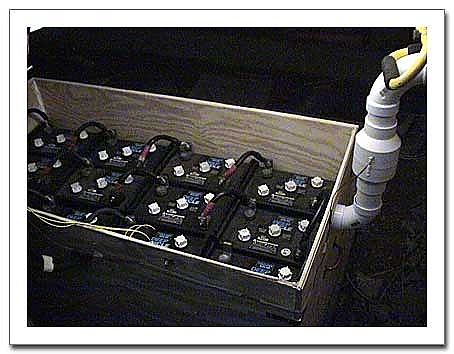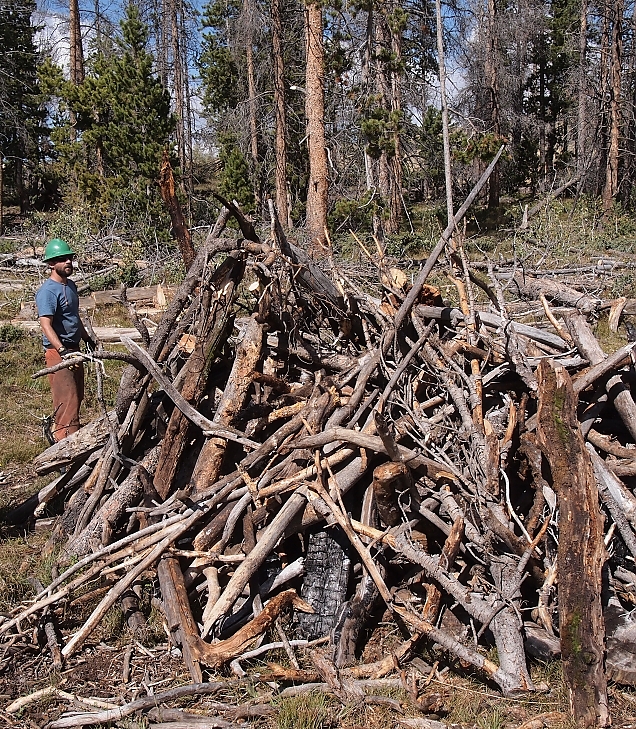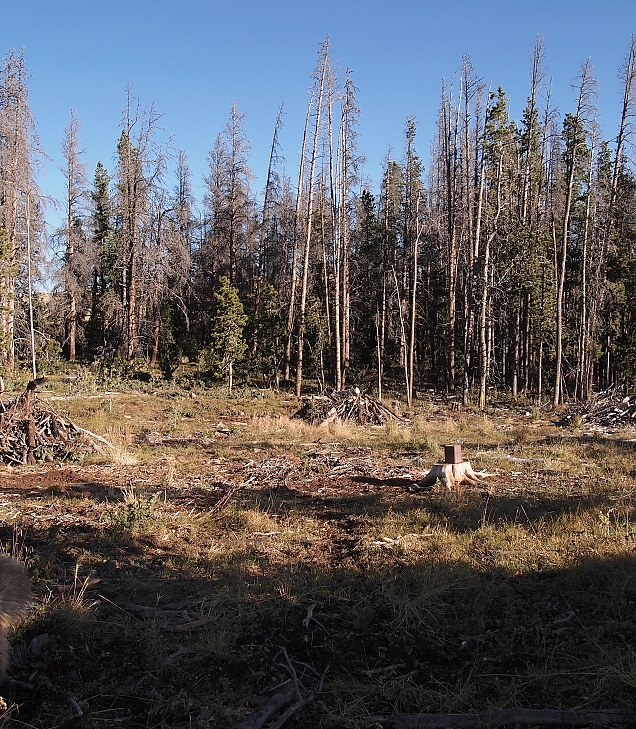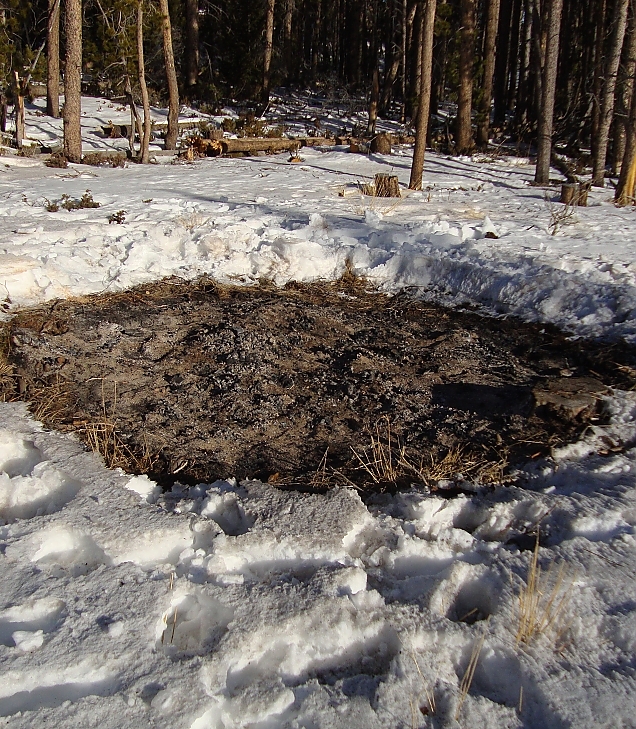Posted by: Rick
This post really has two related topics. I'll start with winterization.
It gets cold at the cabin. It is not unusual to see a day or two where the temperatures are -30°F, and that is without the wind chill. So, if we don't keep the cabin heated in the winter, it is wise to winterize it so we don't suffer from broken water pipes. (We actually do try to keep it heated in winter, but not always with success. But, that is the second part of this story.)
Winterizing is not really that difficult. Here are the steps:
- Turn off the water pump at the electrical panel
- Open all the faucets and run water until there is no more pressure, flush the toilet until the tank does not fill any more
- In the crawlspace, open a faucet that drains the pressure tank
- Also, open the two faucets that drain the hot and cold water lines that feed the sinks, tub and toilet
- Pour RV antifreeze into the drains and toilet
- Turn the hot water heater to the "Pilot" setting
It seems there should be some risk of the peanut butter and jelly (and other liquid-ish food items) freezing, but that has never happened.
I don't drain the hot water heater. I used to. But, nowadays I just leave the pilot running with the thermostat turned down. I think the small amount of heat from the pilot light keeps the tank warm enough to prevent freezing. I hope so. It has so far.
One could argue that we don't really need to winterize since we have a propane forced-air heater that we set to 45°F when we are gone. That is meant to provide enough heat to keep the cabin from freezing, which is not only good for the plumbing, but for everything else from the logs to the furniture. However, I still winterize just in case the heater doesn't work.
The heater could "not work" for a variety of reasons, most notable is the loss of electricity. Since the house is powered by the sun, if we lose the sun for several days or if snow accumulates on the solar panels preventing them from working for a few days, it is possible to drain the batteries to the point where the inverter shuts down and stops providing AC power. In that case, the heater won't work, of course.
But, we've been suffering from a greater heater woe for a couple of years. The pre-ignition blower will come on to evacuate any accumulated gasses and equalize pressure in the system, then a pressure switch activates and allows the burner to ignite and the main blower to come on. The problem is that the pressure switch never activates, so the heater never comes on. And, in the meantime, the pre-ignition blower just blows and blows and blows until it drains the batteries.
Last year, Grant from Laramie Heating came up and cleaned everything and got it working. And, he left me with a replacement pressure switch in case it acted up again -- which it did. So, I replaced the pressure switch and everything was working when we left last September. A neighbor has checked on the cabin once a week since then, and this week discovered the pre-ignition blower blowing. And, blowing. And, blowing. It could have been going as much as eight days! So, he turned off the heater.
I am sure glad the cabin is winterized!
I'll call Grant and see what he thinks. It may be time for some new heater guts or even a new heater because we can't have it not working next winter! I'll keep you posted via comments or additions to this post.
Posted by Rick on 02/12/2015 at 10:06 AM
Tags:
cabin,
weather,
maintenance
Filed under:
Projects •
Winter
Permalink
Posted by: Rick
Our "off the grid" cabin is a battery powered cabin. We are truly "off-the-grid" and get our electricity from the sun and wind. (We do have a backup generator.)
On sunny and/or windy days (and there are plenty of them), we get most of the electricity we need during the day directly from the solar panels and wind turbine. Any excess electricity we generate beyond what we use, is stored in batteries located in the crawlspace under the cabin. We then draw from the batteries at night, or when there is little sun or wind.
The batteries are in a plywood battery box I built. It is about 4' long, 3' wide and 2.5' high with a tight-fitting lid. It can hold up to twelve 6-volt batteries. We have a 24 volt system, so the batteries are wired in banks of 4 batteries in series. Then, each bank is wired in parallel with other banks. Right now, we have 8 batteries, so 2 banks of 4.
(Here is a photo of the original battery system, which was replaced many years ago. You can see three banks of four batteries and the evacuation fan.)

And, they are old.
Batteries used for off-the-grid applications are deep-cycle batteries--different from what you use in your car. To start your car, you want a battery that can provide a huge amount of current for a very short time to start the car, then be charged back to full capacity quickly. For an off-the-grid application, you want a battery that can provide a more modest amount of current over a long period of time and use up to 40% to 50% of its capacity before being recharged.
The batteries we have now are wet-cell, deep-cycle batteries. That means they need to have distilled water added occasionally. And, that when they charge they give off hydrogen gas. Thus the battery box, which encloses the batteries and is vented to the outside. A small 24V ventilation fan comes on whenever the batteries are being charged, and exhausts any gasses in the box to the outside of the cabin. A critical safety feature!
Deep-cycle batteries have a lifetime specified in discharge cycles. A cycle is usually defined as a single discharge to 60% or 50% capacity. Lifetimes can range from 800 or 900 cycles up to 1500 or so cycles. It depends on the battery. And, the more cycles the more expensive the battery. After this number of cycles of discharge and recharge, batteries need to be reconditioned or replaced.
Our batteries are about 10 years old. They only cycle when we are there to use electricity. Or, when we are not there and we have several days where they don't charge. (There is electrical use even when we are not there since we leave the propane forced-air heater on and set to 45°F.) Still, they have had many cycles, and some to levels well below 50% or 60% of their capacity. Before we move in full-time, we need to replace the batteries.
To follow my research and decision on new batteries, click through to "More..."
More...
Posted by Rick on 02/03/2015 at 06:34 PM
Tags:
cabin,
solar,
wind
Filed under:
Projects
Permalink
Posted by: Rick
Several years ago, we had about 200 beetle-killed trees cut from our property. Beetle-killed trees are a fire hazard and we wanted to create a defensible space to the west and southwest of the cabin. (The wind almost always blows from that direction, and any wildfire would be highly likely to come from that way.) I'll likely talk more about the pine beetle infestation and the damage it has caused in Colorado forests in a future post.
The logging company we hired to do the job did cut the trees and hauled them away. But, they left a huge mess behind. There were stumps and slash that they refused to clean up. Also, some dead trees that were not cut have subsequently fallen. In short, our "meadow" was pretty ugly.
Last year we found a forest management company in Wyoming--Tiger Tree--whom we hired to clean up the site. They did a great job in trimming all stumps near the ground, cutting up fallen trees, and collecting all the trimmings into piles of "slash". Here is a photo of one of the four slash piles:

These piles are created so they can subsequently be burned. It is legal to burn these at our location subject to some rules. There must be at least 3" of snow on the ground and the wind must be 10 mph or less. And, I had to submit a request for a burn permit (easy to do online). Several agencies have to approve the request. Then, on the day of the burn the sheriff's office must be notified.
Here is a wider view of the meadow after clean-up. You can see several of the slash piles, ready for ignition. Just need to wait for winter, snow, and no wind (along with access to the property).

We waited several months before everything lined up to make burning possible, but this week the job got done!
And, the result:

(Photo taken by a neighbor.) We'll rake this around and plant native grass and wildflower seeds!
Posted by Rick on 01/23/2015 at 12:16 PM
Tags:
photos,
maintenance
Filed under:
Projects •
Winter
Permalink
Page 8 of 8 pages
‹ First < 6 7 8




